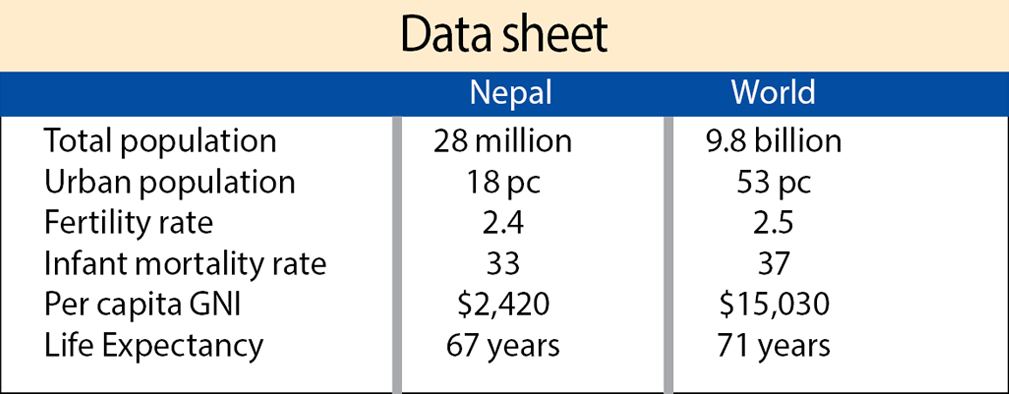Nepal’s population to rise to 36 million by 2050
Nepal’s population has risen to 28 million, according to a World Population Data Sheet released by the Population Reference Bureau, which also projects that the total population will rise to 36 million by 2050.
“Nepal’s population of 28 million is predicted to rise to 32.4 million by mid 2030 and 36 million by mid-2050,” the US-based global research and advocacy group has stated. The 2011 national census put the country’s population count at 26.5 million with the annual growth rate of 1.35 per cent.
Nepal is ranked 19th and 56th in Asia and the world, respectively, as far as population is concerned, while it would be 20th in Asia and 58th in the world in the population count by 2050.
According to the data till mid-2015, at least 18 per cent of Nepalis are living in urban areas. “At least 33 per cent of the total population is below 15 years of age, while six per cent of the people residing in Nepal are 65 years or older,” states the demographic data which analyses more than 200 countries across the globe.
Nepali mothers now have an average of 2.4 children, down from six in 1970 and only 47 per cent have had direct access to modern contraceptive tools, adds the PRB’s study. Only half of the married women in ages between 15 and 19 years use birth control methods.
The data also shows that infant mortality rate (IMR) has fallen to 33 from 166 per 1,000 live births in 1970. “IMR in mid-2014 was calculated at 46,” the data revealed disclosing the success of numerous efforts by stakeholders to improve the child and reproductive health status. According to the PRB’s study, life expectancy has gone up to 69 years for Nepali females and 66 for males, while it was just 42 for both sexes in 1970.
Country’s Gross National Income per capita at purchasing power parity is $ 2,420, the report adds. “World population is forecast to rise from 7.3 billion today to 9.8 billion by 2050,” the demographic study which measures 16 different population, health, education and environment indicators, added.






